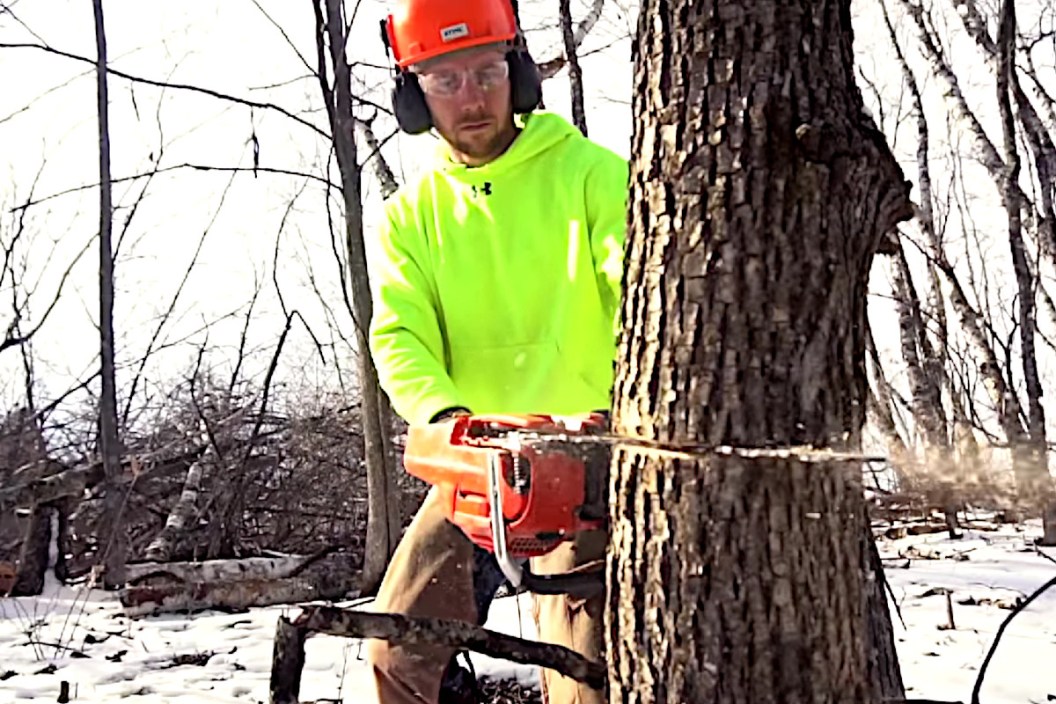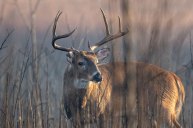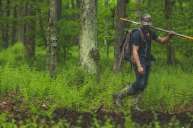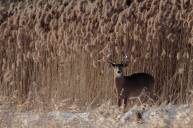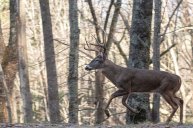"Where are the deer going to feel safe?" This is a question that I asked my hunting buddy a few years ago when he bought his first piece of property. There were several things about this property that looked very promising. There were agriculture fields nearby, healthy oak trees on the property, a few really great water sources, and the location was a place known to produce giant deer. But within a half hour of walking the property, I realized there was a major flaw. I had to give him the bad news that mature bucks likely won't be living on this property because there were no spots where they would feel safe. Bedding is a factor that sometimes gets overlooked when scouting a property, but it's perhaps the most important factor. Because the deer know they are prey, and they need spots to stay hidden from predators, be they deer hunters or otherwise. If that bedding cover isn't there, they'll go to a property where it is, often your neighbor's place, and no one wants that.
However, not all is lost in a situation like my friend's. There was no need for him to throw the farm back on the market and try to recoup his investment. It just needed a little deer habitat improvement. I explained to my friend that with some time, a chainsaw, and a little bit of sweat equity, we could do some serious hinge cutting that would make the animals more comfortable there and add a lot of value to his farm from a deer hunting perspective.
Why Should You Hinge Cut Trees for Deer?
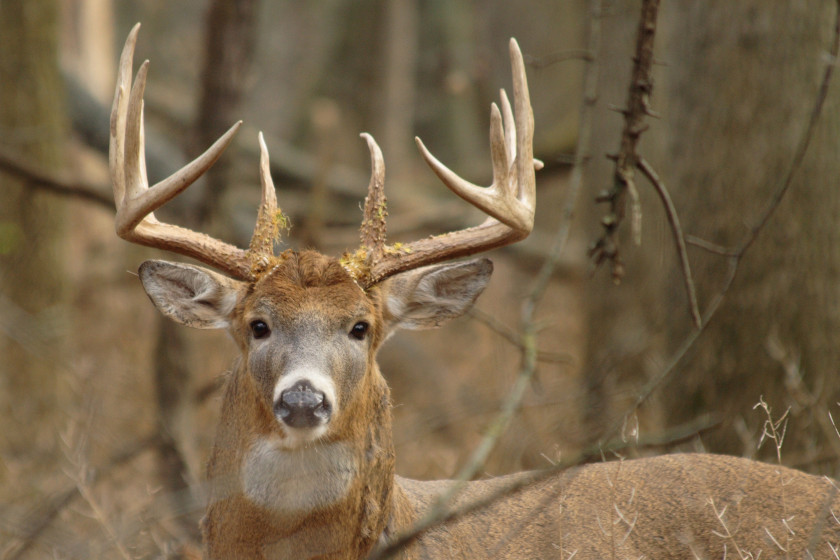
Getty Images: marcinplaza
If you aren't familiar with the practice of hinge cutting, it's an amazing deer habitat management practice that I love doing during the off-season months, preferably early summer. At its core, you cut trees about two-thirds of the way through, making sure not to cut the entire tree down. This results in horizontal growth of the tree which provides numerous benefits for not only deer, but other forms of wildlife as well. Hinge cutting trees allows for a lot more sunlight to reach the forest floor. This allows new growth which in turn, creates a thick "underbrush" as we call it here in the Midwest. On top of that, with the tree cut horizontally, this also allows for more twisted and vine-like brush to grow which is essentially prime habitat for mature whitetail bedding.
For my bedding areas, I like to hinge cut about chest high. This creates a funnel that deer love to use to bed down and feel safe, especially during the pressure of hunting season. I perform this type of hinge cutting in a lot of my sanctuary spots that I rarely visit. Leaving those spots to the deer and the deer only makes it a great spot to hunt the perimeter of during the rut.
Hinge Cutting for Food
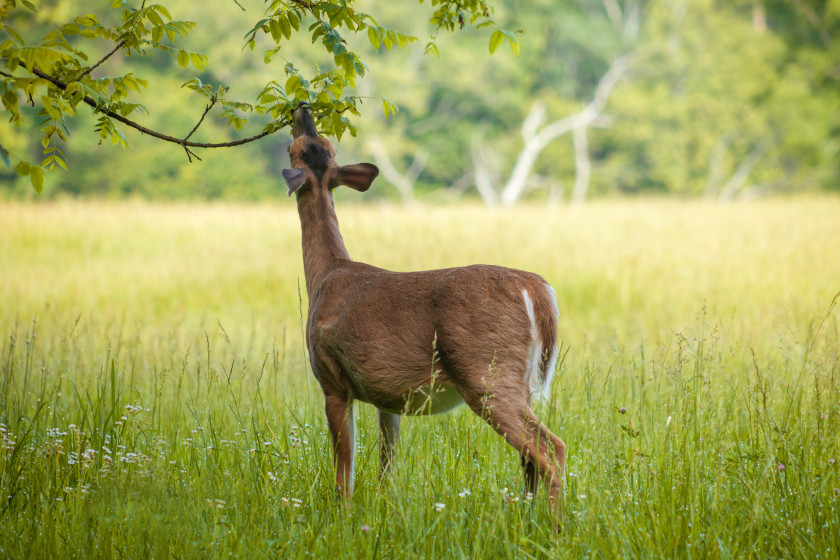
Getty Images: Soundarajan
Another benefit of hinge cutting hunters often overlook is the food source that it provides. Woody browse makes up nearly 80 percent of a whitetail deer's diet. Meaning, if you're putting all your effort into food plots and not paying attention to the leaves and shrubs that can be created through hinge cutting, you're missing the bigger picture. By A LOT!
Summer and winter browse are by and large the most stable food source for a whitetail deer, so it's extremely important that there is enough to last through the brutally cold late winter months. But don't forget the summer months when the bucks are growing their antlers and need more nutrients and the does are nursing their fawns. Hinge cutting helps provide that additional nutrition to the deer herd.
When vegetation matures, the green leaves tend to become waxier and less palatable to whitetail deer. Hinge cutting of larger trees allows for new, rejuvenated undergrowth to form that is extremely tender and tasteful for deer. If you've ever tried to plant new trees on your property, you already know how much deer like to eat smaller trees unless you put a barrier around them. And the perimeters of this new deer bedding area will give you an attractive spot to hang a deer stand when the seasons arrive.
Hinge Cutting Tips

Getty Images: DmitriyPopoff
Hinge cutting trees can be extremely dangerous if the proper precautions are not taken. I recommend having some hunting buddies to help. Mainly because it's hard work, but also simply for safety reasons in case something goes wrong. I prefer to only hinge cut medium sized trees, somewhere between two and six inches in diameter, very rarely will I go above that. Deer are short creatures, so try to cut your trees at about waist height.
When cutting these trees, it's very likely that sharp ends will form as the tree leans, which if the tree is cut slightly too much, can create a lot of unwanted energy and be extremely dangerous as the tree kicks out. Make sure you have space to back away from the falling tree. Always plan exactly where you want each tree to land. Having a spotter nearby is recommended as he might be able to see things that you can't from your angle. Inspect the top of each tree before cutting to ensure there aren't any dead limbs that could come loose and fall onto you as you cut. Make sure your gear equipment is properly maintained and always have adequate gear for the job. A good pair of gloves and safety glasses goes a long way. As do sharp blades and a good chainsaw.
I like to cut my trees downward at a 45-degree angle and I stop around two-thirds of the way through. Depending on the size of the tree, you can usually push it over to a horizontal position. So long as you leave a decent amount of meat from the tree to the stump, that tree will live for several more years providing tons of incredible undergrowth and browse the deer will quickly notice and start utilizing. You don't need to cut a huge area either. For most areas, an acre-sized bedding area will hold plenty of deer.
You can also use hinge cuts to create a funnel to steer deer down a specific trail and stand site, thus solving the problem of an ideal tree that sees little deer activity. Study the deer trails on your property ahead of time and think about how you can alter their behavior with partially felled trees. Get creative and you can turn an otherwise ordinary hunting property into something that's the envy of all your hunting buddies.
